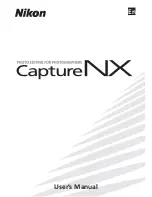
ThinApp User’s Guide
90
VMware, Inc.
Shortcuts
The
Shortcuts
parameter
lists
the
locations
where
the
thinreg.exe
utility
creates
a
shortcut
to
a
virtual
application.
The
capture
process
determines
Shortcuts
entries
based
on
the
shortcuts
the
application
installer
implements.
MSI
files
use
the
Shortcuts
parameter
to
determine
the
shortcuts
to
create.
Examples
You
can
modify
the
Shortcuts
parameter
to
create
a
shortcut
in
the
Microsoft
Office
folder
of
the
Start
menu
to
the
Microsoft
Word 2003
application.
If
you
add
shortcut
locations,
use
semicolons
to
separate
the
entries.
Each
entry
can
contain
folder
macros.
[Microsoft Office Word 2003.exe]
ReadOnlyData=bin\Package.ro.tvr
Source=%ProgramFilesDir%\Microsoft Office\OFFICE11\WINWORD.EXE
Shortcuts=%Programs%\Microsoft Office
Source
The
Source
parameter
specifies
the
executable
file
that
ThinApp
loads
when
you
use
a
shortcut
executable
file.
The
parameter
provides
the
path
to
the
executable
file
in
the
virtual
or
physical
file
system.
ThinApp
specifies
the
source
for
each
executable
file.
If
an
application
suite
has
three
user
entry
points,
such
as
Winword.exe
,
Powerpnt.exe
,
and
Excel.exe
,
the
Package.ini
file
lists
three
application
entries.
Each
entry
has
a
unique
source
entry.
If
ThinApp
cannot
find
the
source
executable
file
in
the
virtual
file
system,
ThinApp
searches
the
physical
file
system.
For
example,
if
you
use
native
Internet
Explorer
from
the
virtual
environment,
ThinApp
loads
the
source
executable
file
from
the
physical
file
system.
The
Source
parameter
and
the
/bin
directory
in
the
project
are
not
related
to
each
other.
The
/bin
directory
stores
the
generated
executable
file
and
the
Source
path
points
to
the
installed
executable
file
stored
in
the
read
‐
only
virtual
file
system.
Do
not
modify
the
Source
path.
The
capture
process
determines
the
path
based
on
where
the
application
installer
places
the
executable
file
in
the
physical
file
system
of
the
capture
machine.
ThinApp
creates
a
virtual
file
system
path
based
on
the
physical
file
system
path.
Examples
The
Source
parameter
can
point
to
an
entry
point
in
C:\Program Files\<base_app>\<app>.exe
.
[<app>.exe]
Source=%ProgramFilesDir%\<base_app>\<app>.exe
WorkingDirectory
The
WorkingDirectory
parameter
determines
the
first
location
in
which
an
application
looks
for
files
and
places
files.
ThinApp
does
not
include
this
parameter
by
default
in
the
Package.ini
file
because
Thinapp
assumes
the
working
directory
is
the
directory
where
the
executable
file
resides.
The
typical
location
in
a
ThinApp
environment
is
on
the
desktop
of
the
deployment
machine.
You
can
set
the
working
directory
for
individual
applications.
The
working
directory
can
exist
in
the
virtual
file
system,
the
sandbox,
or
the
physical
system
depending
on
the
isolation
mode
setting.
You
can
use
folder
macros
for
the
pathname
conventions.
The
WorkingDirectory
parameter
sets
the
initial
value
of
the
working
directory
but
the
directory
is
dynamic
as
you
navigate
to
other
locations.
Содержание THINAPP 4.6 - MIGRATING APPLICATIONS TECHNICAL NOTE
Страница 38: ...ThinApp User s Guide 38 VMware Inc...
Страница 114: ...ThinApp User s Guide 114 VMware Inc...
Страница 136: ...ThinApp User s Guide 136 VMware Inc...
Страница 140: ...ThinApp User s Guide 140 VMware Inc...
Страница 146: ...ThinApp User s Guide 146 VMware Inc...
















































